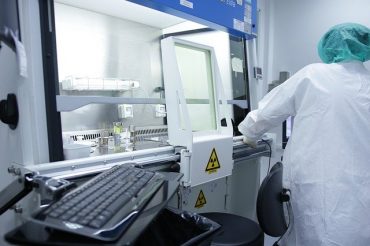
When AI friction is removed, more people are empowered to identify potential improvements AI can make and what they can change within the organization.
Data analytics and artificial intelligence are critical to business success these days. But many initiatives fail to move beyond a pilot stage, if they make it that far at all. Most businesses run into technical, people, and organizational problems that prevent them from reaping the benefits analytics and AI can offer.
Recently, RTInsights sat down with Ingo Mierswa, Senior Vice President of Product Development at Altair (and former Founder and CTO of RapidMiner before Altair acquired it), to discuss the friction businesses encounter with their data analytics and AI efforts; how best to address technical, organizational, and financial friction, and how Altair can help.
Here is a condensed version of our conversation.
RTInsights: In a typical organization, what are the main causes of friction when implementing data analytics and AI efforts?
Mierswa: When most people think about friction around analytics or building AI and machine learning models, they think about technology first. But that’s not the biggest form of friction. Yes, it is harsh. It is very difficult to understand how machine learning and artificial intelligence work. And there’s no question that this is a hard problem.
But at the same time, it doesn’t seem that technical friction is the biggest problem. In my opinion, it’s only one of the three main friction points – technical friction, organizational friction, and financial friction.
Let’s start with technical friction. AI is hard. Machine learning is hard. Building those models, understanding the statistics, deploying those models on the right infrastructure, all of that is hard. That can create some technical friction. But to be honest, I feel Altair RapidMiner, our data analytics and AI platform, offers so much, and it makes it so easy to overcome all of that. That should no longer be your biggest pain point, in my opinion.
But when it comes to organizational friction, there are many things where even the best piece of technology cannot automatically help overcome all issues by just pressing a button.
One aspect of organizational friction is a lack of talent. There are not enough data scientists or people who understand machine learning AI. How can you train your people to learn something new to adapt to the new technologies? You need to give them time and materials to do that. Sometimes, there is a lack of ideas or a lack of buy-in. All of those different things can be a form of organizational friction.
And then last but not least, there is financial friction. You need to invest in the right infrastructure, like Altair RapidMiner, for example. To do that, you must go through all the procurement processes and everything else surrounding that, like the paperwork. All of that can cause some form of friction until you finally get things going and accelerate the building of AI models.
RTInsights: Why is it so important to address these issues? And especially why now?
Mierswa: I’ve been doing data science and machine learning for over 20 years now. And honestly, I don’t think there was ever a phase in my career where there was more excitement around AI than right now. It finally made some breakthroughs so everybody can see how much AI and machine learning can transform organizations.
Everybody is thinking about this. Every organization will need to change, automate the making of some decisions, and accelerate access to information. If they’re not doing this now, their competitors will be doing this, and they will be quickly outperformed. So, addressing friction is important because you need to change your processes. You need to change the way you’re solving your problems.
And why now? Well, again, you just have to look at how quickly this market has evolved in recent years alone. And I predict this pace of evolution will go on for a couple more years to come. So, if you’re not investing now, if you’re not starting to change now, if you’re not trying to overcome those friction fixed points now, you may wake up at one point and realize it’s too late.
Your competitors have already made their decisions. They’re improving the pace at which they design new products or deal with their clients. There is nothing you are doing wrong. You do your business like all the time before, but you’re no longer doing things in an efficient way. It’s as if machines are invented, and everyone is using machines, but you are still doing everything manually. It’s that big of a change.
RTInsights: How do businesses go about eliminating the friction?
Mierswa: First, acknowledging the need for the right platform. Obviously, Altair RapidMiner comes to mind. Many organizations, thousands and tens of thousands of organizations rely on Altair RapidMiner, to help overcome not just the technical friction points we talk about but also some of the people friction issues. Altair RapidMiner is a fantastic platform to learn about machine learning and AI. So, investing in the right platform is definitely one thing a business can do to address some of the friction.
You need to change the culture. Everything begins and ends with your people. You need to upskill and train your people, so they understand the concept of data science, particularly AI. Additionally, one of the biggest hurdles to eliminating friction that people sometimes struggle with is that they see a business use case. Still, they cannot translate this business use case into an analytical approach.
See also: Operationalizing Data and Analytics
The right upskilling and training are important. You also have to teach not just what button to press in the technology but how to think about the use cases you may be able to solve now with AI. That is an important step. So, you need to encourage a culture of innovation and empowerment where people feel driven to address use cases with AI.
We know that if you upskill your people and build your AI capabilities in-house, your AI projects will be significantly more successful than relying on external talent or outsourcing the AI project.
So, changing the culture, upskilling the people, and investing in your folks are incredibly important to overcome some of the friction. You can give more people access to the technology in a faster way. And with the Altair Units model, you get access not just to Altair RapidMiner, but to all the Altair products we have to offer in a frictionless way.

RTInsights: How does Altair help eliminate the friction?
Mierswa: We focus a lot on frictionless AI. That’s really what Altair plus RapidMiner is all about. And there are three pillars that we offer to overcome the friction.
The first one is our cloud-native platform. And I say cloud-native because it’s built for the cloud. You can deploy it in the cloud, which makes the rollout of the technology much easier. It’s agnostic to the way you want to deploy it. You can also deploy the same cloud-native platform in your private cloud infrastructures. You can deploy it anywhere.
We also have desktop products we can offer. So, it’s a very flexible way to get access to this platform.
The platform does a couple of things to help overcome friction. With Altair RapidMiner, we offer, for example, multiple authoring modalities.
What does that mean? That means that if you want to build AI by, for example, building code, you can do this in the Altair RapidMiner platform. If you prefer to use visual workflows, that’s equally possible. If you want to have a fully automated experience by just pointing the Altair RapidMiner platform to your data and letting it do everything on its own, that is possible, too. And the three modalities are seamlessly integrated. They can go back and forth.
This fosters a culture of collaboration. Depending on your background and skillset, you can use the modality that is right for you and still collaborate with other folks in your organization. That takes away the friction between your domain experts and your data experts. So, that’s one important pillar. Our platform reduces much of the technology and organizational friction we discussed before.
The second super important pillar is our center of excellence methodology. We don’t do the driving for you; we sit in the passenger’s seat and give you helpful hints. We help you assess which of your use cases are the most feasible ones and will have the highest level of impact on your organization. So, you can focus on those use cases first.
We help you with the technology base. Again, you are building the solution and getting it into production, but we help you get to that point and communicate your results. In that way, you can see how it impacts the business.
Also, as part of the center of excellence methodology, we offer the RapidMiner Academy, which is a self-paced learning model. There, you can learn about data science, machine learning, and AI on your own in a self-paced environment and get certified. So, upskilling your people is the second super-powerful pillar that helps you overcome some organizational and technical friction.
And the third pillar is the Altair Units business model. With Altair Units, users get full access to our software tools whenever they need them, and they can determine when, where, and how they want to use different tools without needing to worry if they’re eligible for access.
This is a business model, which was created many, many years ago, that is unique. It offers the level of flexibility no business model has to offer. That takes care of all the financial friction you typically would have with procurement processes.
RTInsights: What are the benefits once you’ve achieved frictionless AI?
Mierswa: First, more people are empowered to identify potential improvements and what they can change within the organization to become better than they were before and better than their competition. It leads to a faster pace of innovation if you adopt the technology, our approaches, and frictionless AI. It allows more products to go all the way from idea to production.
We know that many AI and machine learning projects never make it beyond the prototyping stage. With frictionless AI, to create a model and put it into use, it’s just a matter of a couple of clicks, and you can embed the predictions of the model, for example, into your business application, IT infrastructure, and working processes. So, the models have an immediate impact. And you never need to switch platforms, products, or code on your own.
There’s more collaboration between different people with different skillsets. And no matter if they’re coders, data experts, or domain experts, you can bring all of them together into the same platform and make them collaborate. And that is a breeding ground for even better ideas and an accelerated pace of innovation.
It also brings in the strength of all your stakeholders. Your business people will understand the business side of things better. And your data people will understand the data side of things. By bringing all those people together, you get the biggest possible impact.
And then the last point, with frictionless AI, you will ultimately get a competitive advantage.






